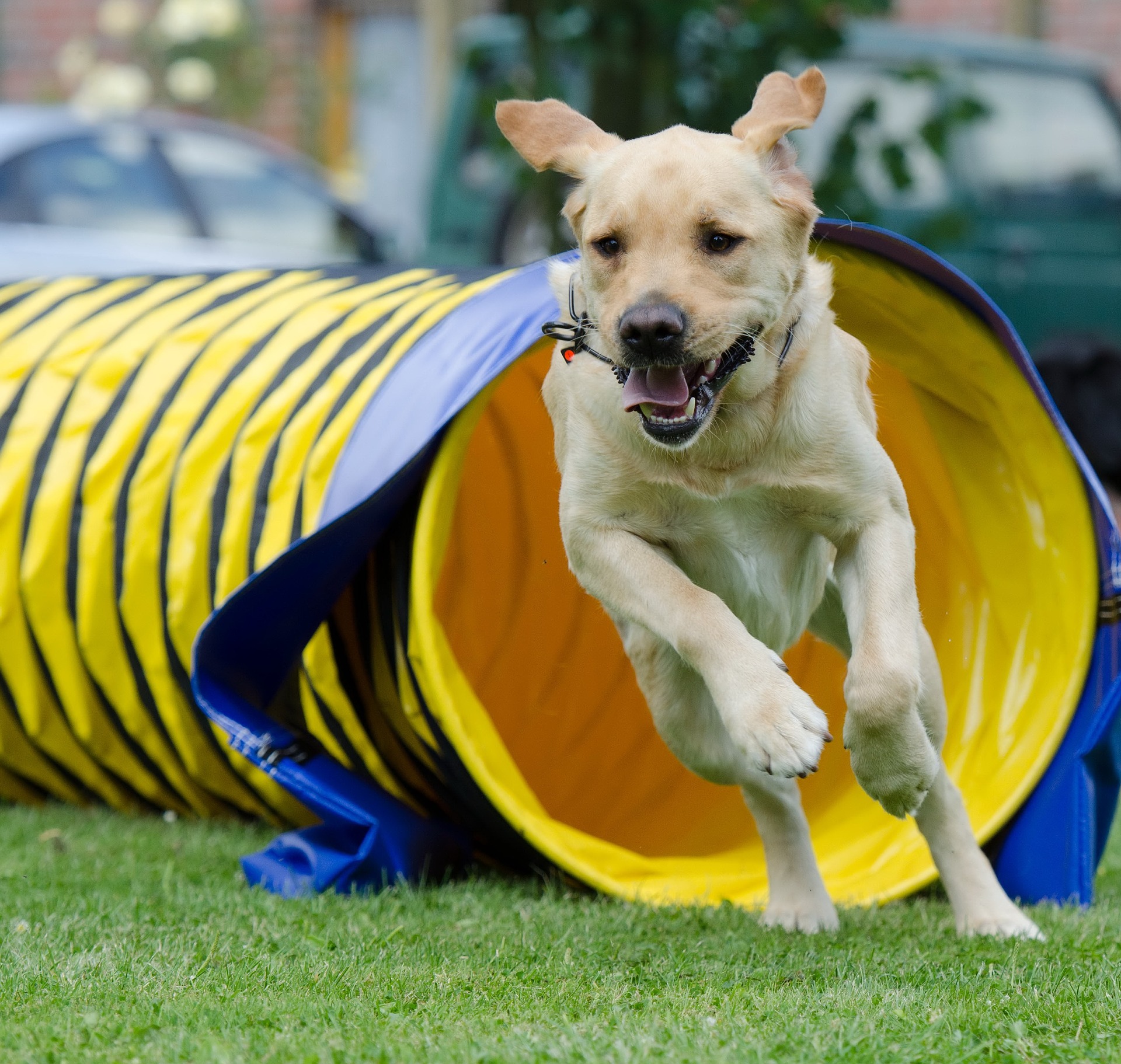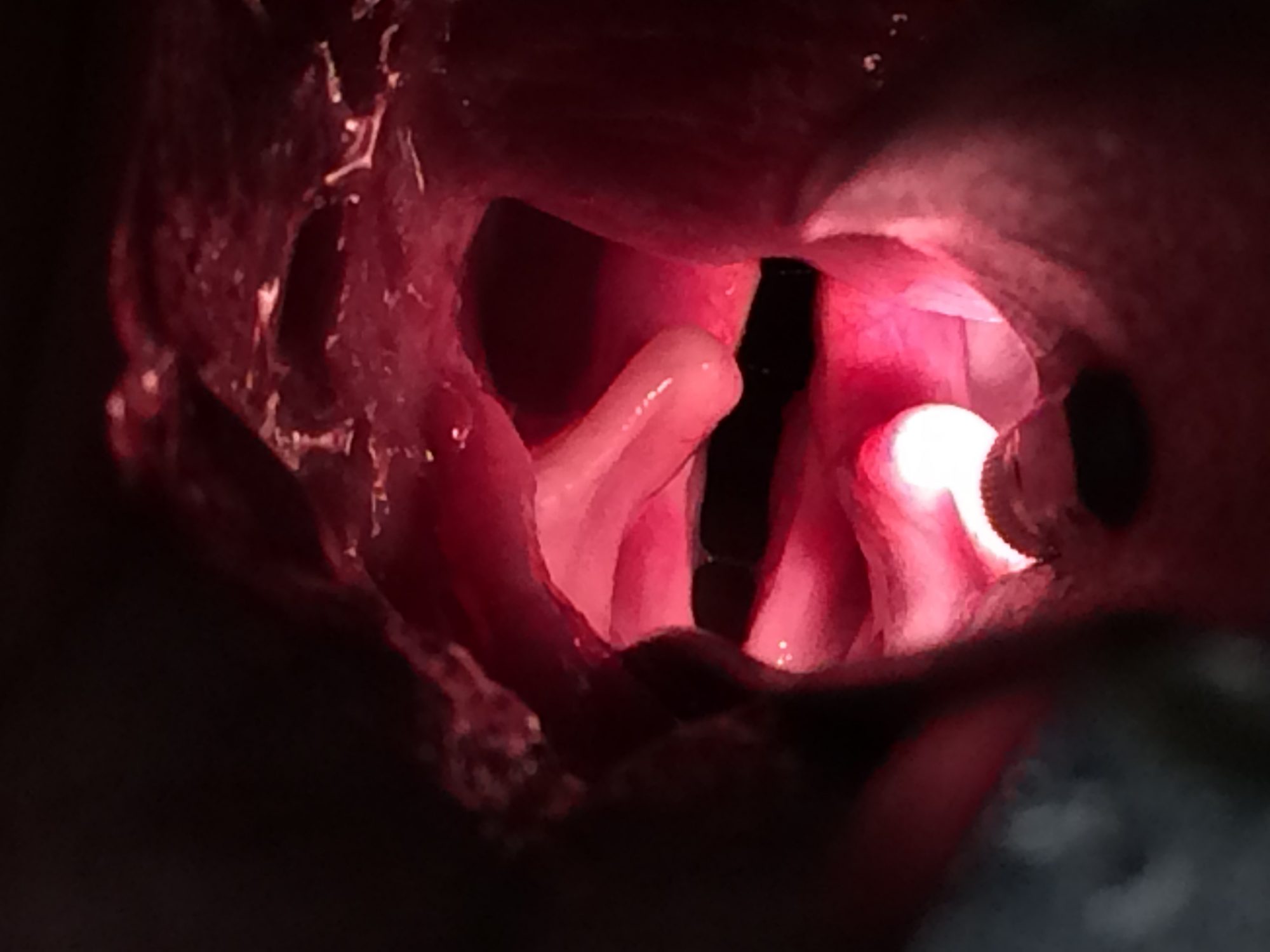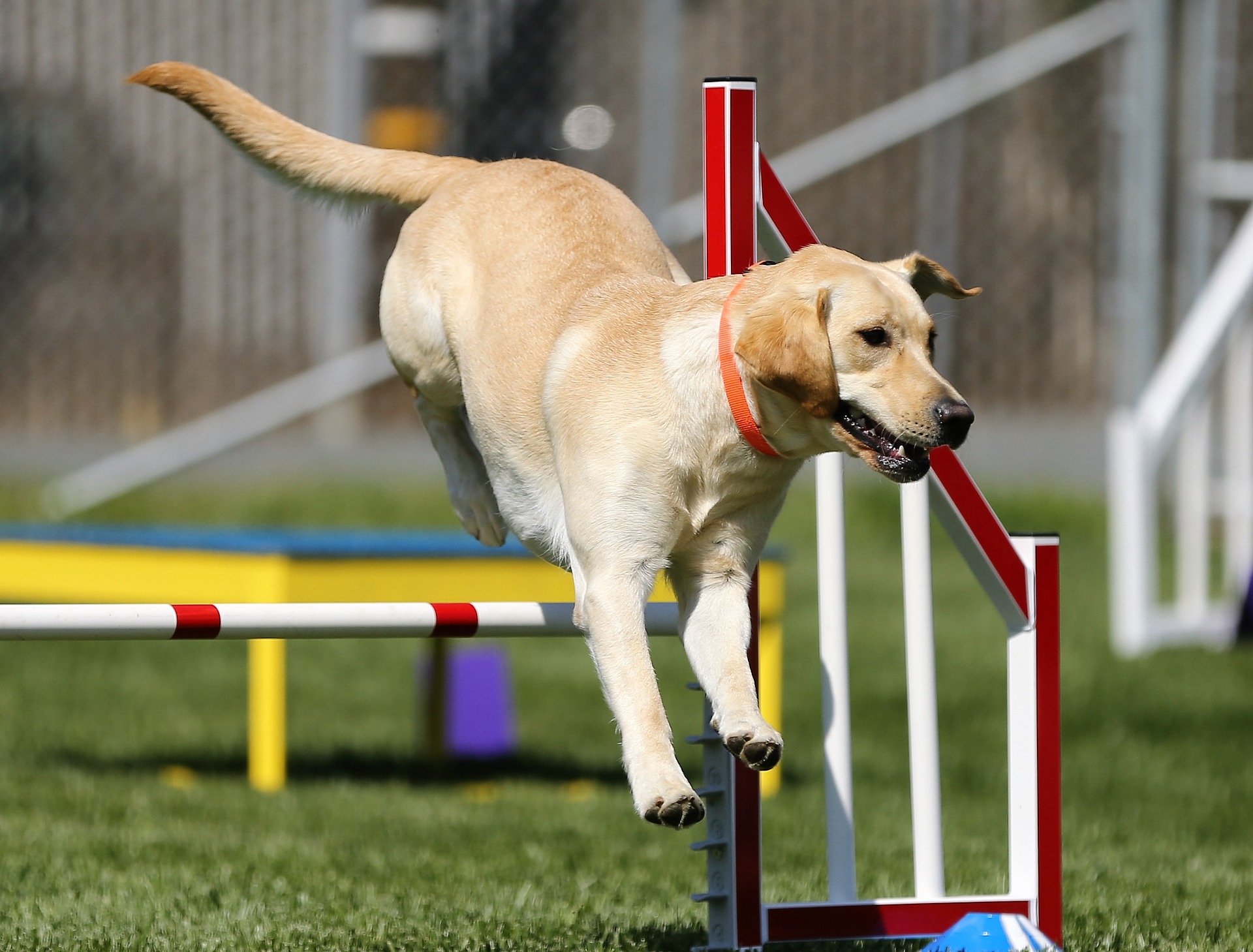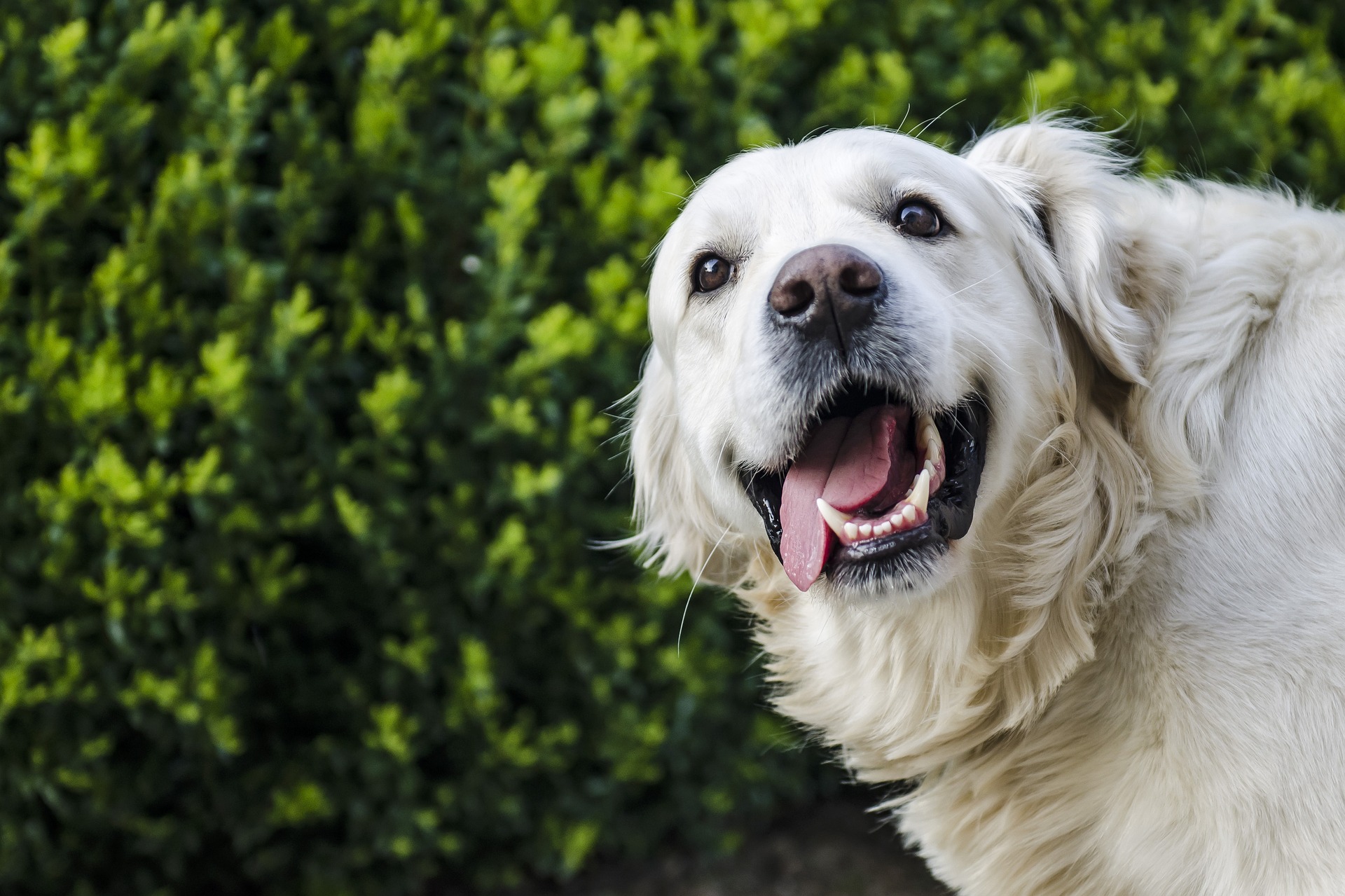Dr. Phil Zeltzman’s Blog
Laryngeal paralysis is not a death sentence
Laryngeal paralysis (aka “lar par”) is a common condition in dogs (and rarely cats). What follows are my thoughts about the condition, its treatment and its outcome. They are based on recent science, and many years of experience treating lar par.

What is Laryngeal Paralysis?
Laryngeal paralysis is a condition that severely affects a pet’s breathing.
In the veterinary world, we call it “Lar Par” in short. A few people call it LP.
The larynx (please note, it is larynx and not “lar-nynx” as many people call it…) is the medical name for the voice box. If you’ve ever had laryngitis, then your very own larynx was irritated. The larynx is also the entrance to the wind pipe (or trachea) and, beyond, to the lungs.
Besides making all kinds of noises, the job of the larynx is to close off after we inhale, open up when we inhale, and again shut off when we eat and drink so we don’t “swallow the wrong way.”
When laryngeal paralysis occurs, none of these things happen. Taking a deep breath becomes impossible. The poor dog literally suffocates.
Who can be affected?
The typical patient is an older large breed dog. The poster child is the Labrador.
Most dogs are over 10 years of age.
Males are affected 2-4 times more often than females.
There is a hereditary or congenital form of Lar Par, which can affect Bouviers des Flandres, Huskies and Dalmatians. In those rare cases, young dogs, 1 year or younger, are affected.
Lar Par has also been described in small to medium dogs, as well as cats.
To avoid posting a long list here, I’ve shared the list of breeds I’ve treated over the years at the bottom of this article*.
What happens?
Lar Par occurs because the nerves that control the muscles which act on the cartilages of the larynx are diseased.
Typically, the condition starts on one side (“unilateral” paralysis or hemiparesis). If your dog is an athlete or a working dog (racing, agility, police dog, serious hiking, Search And Rescue), you may notice breathing difficulties. But if your dog is a family pet or a couch potato, you probably won’t notice much.
Only when the condition affects both sides of the larynx (“bilateral” paralysis) will most pet owners realize that there is a problem.

What causes Lar Par?
Most of the time, we don’t know. This is called “idiopathic” Lar Par.
Occasionally, we find an underlying cause, such as hypothyroidism (a lazy thyroid). This is somewhat controversial, since hypothyroidism is common in older Labs and Goldens anyway. That said, treating hypothyroidism will never correct Lar Par. So we recommend treating hypothyroidism because of the other consequences, not because it helps or cures Lar Par.
Rarely, Lar Par is due to trauma, cancer, generalized diseases of nerves or muscles, or previous surgery (e.g. on the trachea or the thyroid gland).
What are the signs?
Lar Par is a very stressful condition for the patient — who obviously doesn’t understand what is going on. These dogs literally suffocate. It’s a terrible and terrifying condition.
Typically, the signs are progressive. The dog pants without exercising, has a noisy and labored breathing, and gets tired quickly during regular walks. Owners may notice that their dog’s voice changes and sounds hoarse.
Unfortunately, because Lar Par most often occurs in older dogs, the signs are often blamed on old age and arthritis… which delays treatment.
Therefore, Lar Par patients are often presented to a vet when they are in real trouble, i.e. when they can barely breathe. Most often, this happens as the weather becomes hot and humid, but I see these patients year-round, even in the Winter. Overweight or obesity worsens the condition.
At worst, the condition can become life-threatening.
How does my vet know my dog has Lar Par?
An experienced vet or surgeon will suspect Lar Par the second a patient walks into the exam room or on a 10 second video. But to confirm the suspicion, an exam of the larynx under sedation is necessary.
Before this can be done safely, we perform full blood work and chest X-rays. The purpose of blood work is to ensure the safety of sedation and anesthesia. The goal of chest X-rays is to know whether the patient has aspiration pneumonia (more on this below). The same X-rays can show if the patient as mega-esophagus, ie an enlargement of the esophagus – the tube between the mouth in the stomach. Finally, these X-rays confirm that there is no hidden cancer in the chest.
Under “light” sedation, the mouth is opened and the larynx is observed. With Lar Par, the folds of the larynx will not open and close as the patient breathes in and out. The folds remain closed – paralyzed.
Light sedation means that it should be heavy enough so the mouth can be opened, but mild enough for the patient to breathe spontaneously.

What is the emergency treatment?
When a patient presents on an emergency basis, two important goals are to calm the patient, and allow enough oxygen to get on board.
This requires sedation (acepromazine is often the drug of choice). Oxygen can be delivered by many different ways. In extreme cases, the patient needs to be anesthetized and a tube is placed down the throat to deliver oxygen.
My absolute least favorite way of stabilizing a Lar Par patient in crisis is an emergency tracheostomy, although it may be the only option in very rare cases.
If the patient’s temperature is seriously high from overheating, emergency measures are taken to lower it.
Once the patient is stabilized, surgery is the best treatment. Nothing else will work as successfully.
What happens in surgery?
The goal of surgery is to permanently open up the larynx to allow more air to get in.
There are two main types of surgery: intraoral (i.e. surgery is done via the mouth) and extraoral.
These days, the vast majority of surgeons will choose the extraoral approach, i.e. surgery is done through the left side of the neck. Most often, they will typically do a laryngeal “tie-back” procedure, a.k.a. arytenoid lateralization, on ONE side.
Typically, surgery involves placing 2 heavy nylon sutures (i.e. permanent) to open up the left side of the larynx. Only one side (again, typically the left) is opened up to minimize the risk of aspiration pneumonia.
Doing surgery on both sides dramatically increases the risk of aspiration pneumonia… and is simply not necessary.

What is the outcome?
In good hands, the outcome is typically good.
Theoretically, surgery provides instant relief: The patient can finally breathe. Then of course (s)he needs to recover and heal after surgery.
Clients often worry about doing this surgery in their (typically) older dog. The fact is, more lar par patients are over 10 years old.
My standard replies are:
1. Age is not a disease.
2. Lar Par is not a death sentence. It’s a bump along the road, which shouldn’t affect the patient’s life expectancy as long as they don’t get deadly aspiration pneumonia.
What are the complications?
. Coughing is expected after surgery, typically after eating and mostly after drinking. That’s a good thing, as it will hopefully prevent the dog from “swallowing the wrong way.”
. The voice may change, and barking disappears. These are not really complications. They are standard consequence of the tie back procedure you need to be aware of.
. Failure of the nylon sutures and/or a condition of the cartilage of the larynx (too soft or too brittle) are rare but severe complications, which is why we insist on confinement, peace, and quiet after surgery.
. The dreaded complication is Aspiration Pneumonia (also known as AP). This is a type of pneumonia due to aspiration, or inhalation, of food, water, saliva or vomit into the lungs. Thankfully it is an uncommon complication.
. GOLPP (geriatric onset laryngeal paralysis polyneuropathy) is not really a complication of lar par, but something to be aware of, especially in Labs. More information can be found here:
/blog/what-is-golpp-geriatric-onset-laryngeal-paralysis-polyneuropathy/

What if my pet gets aspiration pneumonia? Then what?
It’s crucial that aspiration pneumonia is caught early.
It is an aggressive disease that must be treated aggressively.
We look for 4 criteria: coughing, lethargy, poor appetite and a fever.
If you ever suspect AP, time is of the essence. A vet should see the patient ASAP, listen to the lungs and take chest X-rays to confirm the diagnosis. Treatment involves hospitalization, IV fluids, strong antibiotics, nebulization and a type of physical therapy called coupage.
What’s new with Laryngeal Paralysis?
We now give patients 2 anti-vomiting drugs (metoclopramide and Cerenia) and an antacid before surgery.
Then they stay on cisapride (a daily pill) for life, after surgery. The hope is to decrease the risk of vomiting by helping move food downward.
These days, we don’t make the opening in the larynx as big as we used to, just enough for the patient to breathe comfortably. This is clearly art more than science, and you can see how experience comes into play. What’s the downside? The patient will likely have a noisier breathing, as air goes through a smaller opening. But again, as long as the patient can breathe comfortably, we don’t mind. As I always tell my clients, “I don’t treat noise, I treat dogs.”

What do I need to do at home after surgery?
This will depend on your surgeon’s recommendations. In my practice, we recommend:
• Strict rest for 2 months to allow proper healing with scar tissue
• Soft food (“meat balls”) for 2 weeks
• Not too much water intake at once
• Pain killers for 7 days
• Cisapride for life (not all surgeons do that)
• Weight loss (these patients are often chubby), or weight control as needed
• A harness instead of a neck collar
The only restriction is swimming: your dog will have a permanently open larynx, with no possibility of closing it off, should (s)he swallows water. There is therefore a risk of aspiration at best, and drowning at worst.
What’s the bottom line?
Overall, Lar Par is a stressful condition for the dog and a stressful situation for the owner. Fortunately, in most cases, results of Laryngeal Paralysis surgery are good to excellent.
Phil Zeltzman, DVM, DACVS, CVJ, Fear Free Certified
* Here is a list of breeds I’ve treated over the years:
Labradors and Lab mixes are # 1 by very very far.
Golden retriever
Pitbull
Greyhound
Shepherd (and mixes)
St. Bernard
Britany spaniel
Husky (young or old)
Sheltie
Beagle
Akita
Mastiff
Boxer
Bulldog (yes, really)
Pomeranian
Wheaten Terrier
Border collie
Springer spaniel
Chessie (Chesapeake Bay Retriever)
Bassett hound

Dr. Phil Zeltzman is a traveling veterinary surgeon in Pennsylvania & New Jersey. An award-winning author, he loves to share his adventures in practice along with information about vet medicine and surgery that can really help your pets. Dr. Zeltzman specializes in orthopedic, neurologic, cancer, and soft tissue surgeries for dogs, cats, and small exotics. By working with local family vets, he offers the best surgical care, safest anesthesia, and utmost pain management to all his patients. Sign up to get an email when he updates his blog, and follow him on Facebook, too!

